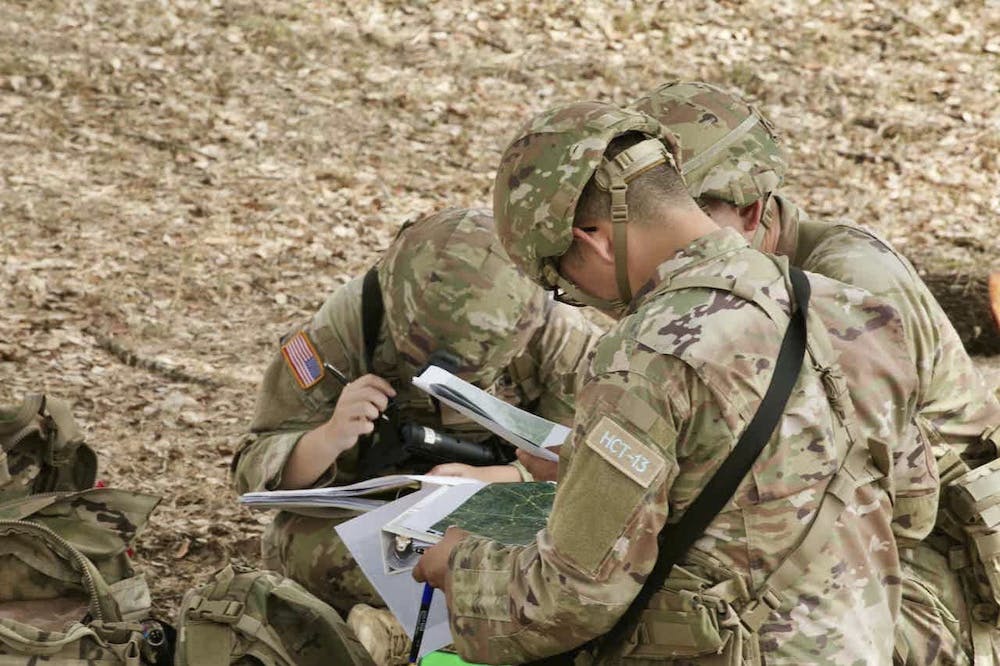Army’s New Intel Doctrine Prepares for a Quantum Future
Multi-domain operations require modernization of the service’s intelligence, surveillance and reconnaissance while investing in new technologies.

The U.S. Army updated its intelligence doctrine to outline steps to modernize its intelligence, surveillance and reconnaissance capabilities, as well as develop deep-sensing technology like quantum computing.
Field Manual FM 2-0, nested within FM 3-0 multi-domain operations, outlines how intelligence supports operations across all five domains, including land, sea, air, space and cyberspace. The updated manual establishes the commander’s role in driving the intelligence warfighting function and emphasizes that intelligence is a “team sport.”
“It is where we’re headed for 2030, and then [Army] Futures Command is already looking at what must the Army do out to 2040. You’ll see that we’re doing joint and multinational operations, and we’re fighting at echelon,” Lt. Gen. Laura Potter said at the annual Association of the United States Army (AUSA) conference in Washington, D.C. this month.
What’s in the New Version?
The new doctrine dives into the mission variables of the intelligence warfighting function, including enemy, terrain and civil considerations. It also addresses emerging capabilities like biometrics, Distributed Common Ground System-Army (DCGS-A), red teaming, human terrain analysis teams and document and media exploitation in modern military operations.
Potter said for intelligence surveillance and reconnaissance (ISR) modernization efforts, the Army stays “grounded” in three layers: a space layer, leveraging both government and commercial space based resources; an aerial layer, which includes both manned High Accuracy Detection and Exploitation System (HADES) aircraft and unmanned platforms; and a terrestrial layer that has sensing at the brigade level and echelons above.
“We’re doing some other work in the terrestrial layer as well,” Potter added.
The Terrestrial Layer System–Echelons Above Brigade (TLS-EAB) will provide integrated signals intelligence and electronic warfare and cyber capabilities for command post survivability, as well as critical asset protection operations and situational awareness and understanding. Meanwhile, HADES is set to replace the current fleet of about 60 ISR aircraft designed during the Cold War, making them challenging to operate in the current multi-domain environment and in changing geopolitical scenarios.
Maj. Gen. Charles Costanza, former commander of the 3rd Infantry Division, who conducted four warfighting exercises at the division level, shared lessons learned from an exercise in which his team went through a scenario of a battle with capabilities that a division of 2030 will potentially have at their disposal.
“Right now, the way we organize ourselves is in a 24-hour battle rhythm. And this needs to change. This is a bad habit from 20 years of fighting counterinsurgency operations. We have a very organized 24-hour battle rhythm with boards, bureaus, senators, cells, and working groups that fill up all the whitespace in that 24-hour period,” Costanza said. “[Large-Scale Combat Operations] is not going to allow you to do that.”
The Future of Multi-Domain Operations
Since threats change rapidly, planning operations in 24-hour cycles is no longer an option.
“I think we have to think more dynamically in how we execute operations,” he added.
Due to advanced systems and formations giving more capability at the division level, units could get out in front of the enemy’s decision cycle much more quickly. For instance, the advancements would allow divisions to go through a “kill contract” that is planned for a 72-hour period in one day, one of the many reasons why the Army is rethinking and modernizing the ways that it gathers intelligence.
“And then the G-2 is looking to you for guidance on it. Well, now what do we do? We just went through three days of killed contract laws and I don’t have anything for you right now,” said Costanza.
Andrew Evans, director of the Army’s ISR task force, said that to be able to “fight for intelligence” and to modernize ISR, the Army adopted three lines of effort: targeted investments in the intelligence foundation, investment in advanced deep-sensing technologies and exploring disruptive technologies to be able to “fight tonight.”
“The intel foundation exists only in part successfully if we got the right sensors and we’re employing the right sensors to inform that,” Evans said. “We’re talking about transformational deep-sensing technologies that really get after the high-end threats. We’re talking about quantum computing, quantum antenna technology. We’re talking about swarming technologies, using autonomy as fast as we can and proliferating that as wide as we can.”
“Autonomy is going to be key in the future. … We’re also talking about how we manage all of the data because that’s going to be a tall order,” he added.
This is a carousel with manually rotating slides. Use Next and Previous buttons to navigate or jump to a slide with the slide dots
-

IRS Tax Filing Pilot Part of Digital-First Customer Experience Plan
Many taxpayers increasingly expect flexible, easy and self-directed digital interactions, agency leaders said.
5m read -

Federal Agencies Make the Case for Quantum
Amid development of emerging technologies like AI and machine learning, leaders see promise in quantum computing.
6m read -

NCI Program Unlocks Emerging Proteomic Data to Advance Precision Medicine
Researchers say sharing molecular cancer research data can expand cancer treatment and care.
32m listen -

Cyber Resilience and Recovery Amid Evolving Cyber Threats
Data durability is a key aspect of NIST’s cybersecurity framework for public and private organizations.
21m listen








